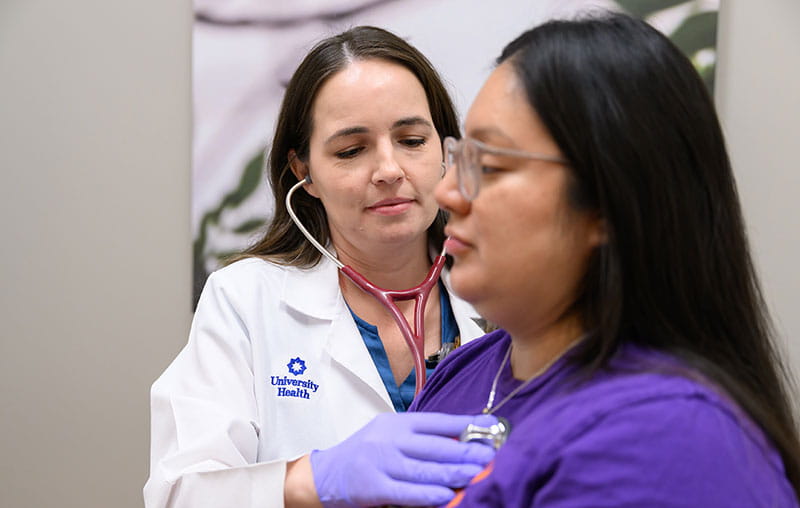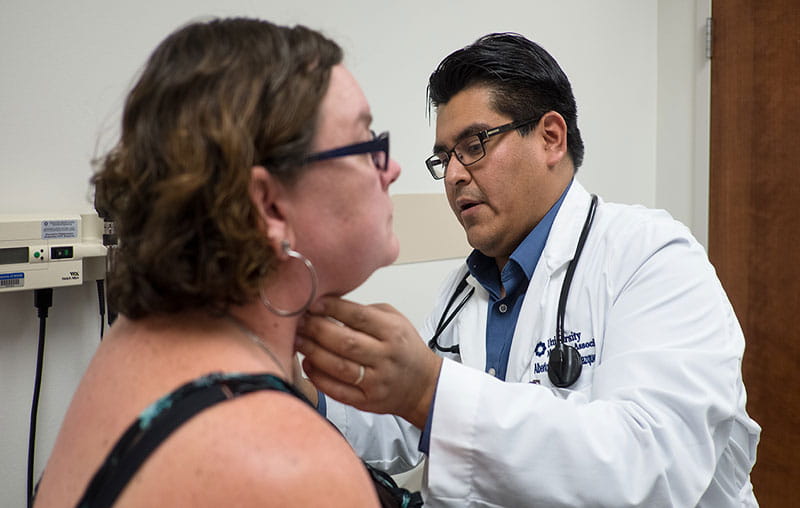We’re all doing a lot more online meetings now and videoconferences can add their own challenges – and potential for embarrassment – to this often-anxious time. But there are some simple steps we can take to improve the experience, to perform our jobs well, and to not let the stress follow us from the screen into our personal lives.
Getting ready for your conference call or FaceTime interview shouldn’t be as elaborate as prepping for the red carpet, but here are some tips you can try so that you look your best:
Raise your camera
Set up your computer or phone so that the camera is slightly higher than your head or at least even with the top of your head, then angle it down into your eyes. You can use a stack of books.
Light your face
Set a tall lamp next to your computer to one side of your face, preferably your favorite side. The lamp should be in line with and slightly behind the computer, so the light falls nicely on your face. You want it to be brighter on your favorite side, but you don’t want deep shadows.
Fill and bounce
Place a piece of white paper or white fabric on the table you are sitting at, but make sure it can’t be seen in the frame. The light reflecting off it will bounce back to fill in shadows on your face.
Powder
Even if it’s not normally your thing, a little powder on the shiny spots can help you look better.
Do a couple of practice takes
Record yourself just saying hello or the alphabet and play it back to see how your camera angle is working or if you need to fix stray hairs, a crooked collar or a shiny spot. If you can’t do that with your computer, hold your phone in approximately the same place. No need to fuss too much, but you’d be amazed at how much improvement you can make with one or two practice shots. It’s a good idea to check your background at the same time – if you’re at your improvised home office, the old heavy metal poster over your shoulder could distract viewers from your current message.
And if you don’t believe me, ask Tom Ford.
How to reduce videoconference stress
WebEx, Zoom, GoToMeeting, FaceTime and Skype: The platforms are many, but the issues are similar. Even as we follow social distancing guidelines, our faces may be looming closer than ever to one another in these group meetings where most people’s faces seem to be gazing at us - all at the same time.
“In face-to-face meetings, we do not maintain steady eye contact with one person,” said Dr. Sally Taylor, senior vice president and chief of behavioral medicine at University Health. “It’s just not natural.”
Videoconference meetings, when everyone is on camera, limit the natural ability to move eye contact around the room and “check in” with people to see what they might be thinking. It can also feel intrusive to have all those eyes lined up in front of you at once. Or you may notice someone who isn’t making eye contact and they may seem distracted when they are not.
If the meeting is a conference call without video, Dr. Taylor said, the intrusive eye contact is reduced. But the silences are more intense. “Extra effort is needed to say ‘let me think for a minute’ so that people know the hesitation or silence is not just ignoring the person,” she said.
Acknowledging everyone in the room is an important part of running the meetings without video, she added.
Dr. Taylor advises those holding team huddles make a list of the team, because when they do a round robin to check on everyone, it can be easy to miss someone whose face isn’t on screen.
“I keep a list in front of me, and check off that I have actively checked in with each person,” she said, “and to make sure that everyone has a chance to speak so that it doesn’t just become a one-sided information sharing session.”
Small technology glitches can add to the frustration of the group.
“I think the delay in muting and unmuting and hang ups/disconnected calls or background noise/bad connections are a challenge. Sometimes people get disconnected. Sometimes they forget to unmute. It can be a bit frustrating for both the one talking and the one listening.”
“I think the biggest thing is not to assume that these mean more than technology glitches,” Dr. Taylor said.
Leaving work at work
It’s also harder, when working from home, to separate out the work stress – and any other factors related to COVID-19, quarantine and isolation that may be affecting your mental health.
It’s important to maintain a regular schedule, stay active, stay informed – while limiting media consumption – and to set boundaries on your work schedule.
“I really like the idea of ‘turning off’ work,” Dr. Taylor said. And working from home makes that harder. “But even those working in the office/hospital/clinic need to have downtime,” she said. This is particularly true for those who work in healthcare or are directly affected by the pandemic.
Dr. Taylor recommends games – card games, board games, fun easy games that don’t take a huge amount of cognitive energy. It helps us leave work behind, and it helps us connect with those in our household with whom we might be spending a lot more time than usual.




